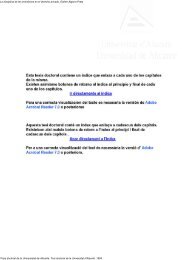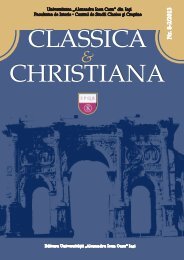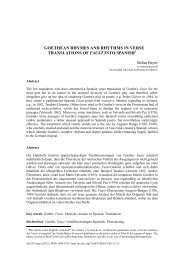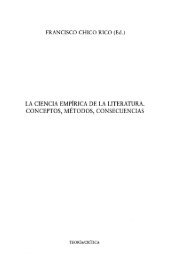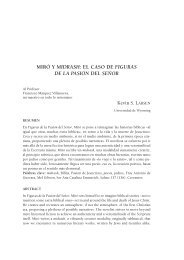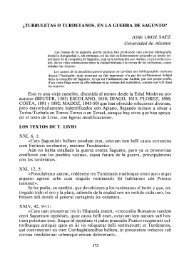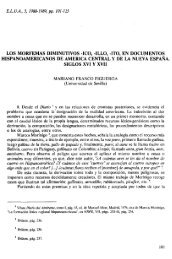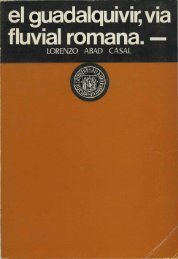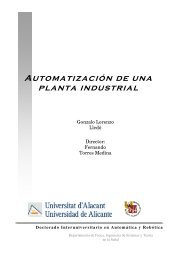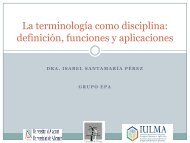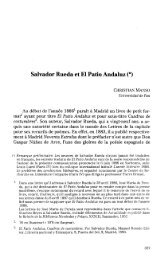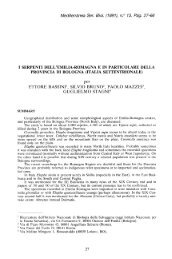ecological effects of marine protected areas empafish project ...
ecological effects of marine protected areas empafish project ...
ecological effects of marine protected areas empafish project ...
Create successful ePaper yourself
Turn your PDF publications into a flip-book with our unique Google optimized e-Paper software.
EMPAFISH Booklet no. 1 Ecological <strong>effects</strong> <strong>of</strong> Atlanto-Mediterranean MPAs in the EU<br />
1993). The principal objective was to evidence regeneration <strong>of</strong> communities<br />
and habitats, the second one was to demonstrate the possibilities <strong>of</strong><br />
managing fishing resources, by benefiting to artisanal fishing métiers. The<br />
first studies started in 1983-1985-1986 with Ody and Bregliano using visual<br />
census, to look at reserve effect on species composition, densities and<br />
biomasses <strong>of</strong> fishes (Bregliano 1985; Ody 1987). The fish fauna <strong>of</strong> artificial<br />
reefs has been compared to the one <strong>of</strong> rocky bottoms. From 1989 to 1994<br />
other surveys have been performed in the Côte Bleue by Harmelin and<br />
Bachet, and a special survey has been dedicated to target species <strong>of</strong> reserve<br />
effect (1995, 1999, 2001) (Harmelin 1995, 1999; Daniel et al. 1999). Fish<br />
indices have been developped by Harmelin with the PMCB team in 1999 and<br />
2001/2002. The impact <strong>of</strong> protection has been evaluated inside the reserve <strong>of</strong><br />
Carry and Couronne by a presence/absence test with target species (Daniel et<br />
al. 2002).<br />
UVC monitoring program conducted in Couronne since 1995 (before<br />
implementation <strong>of</strong> the reserve) showed how specific composition <strong>of</strong> fish fauna<br />
was restored. Noble species came back since 2001 (Jouvenel et al. 2002). The<br />
fish fauna is surveyed every 3 years (1998/2001/2004) by visual censuses<br />
and experimental fishing (Jouvenel et al. 1995, 1998, 2002). Abundances <strong>of</strong><br />
different species increase since 1995 inside the <strong>protected</strong> area. Since 2001,<br />
densities are more equilibrated between <strong>protected</strong> and un<strong>protected</strong> zones, as<br />
a likely indication <strong>of</strong> spillover across the boundaries. The biomass increases<br />
inside the MPA and is amplified when artificial reefs effect is added to reserve<br />
effect, despite decreasing biomass <strong>of</strong> prey species that is probably linked to<br />
predators increasing as Dicentrarchus labrax. The demographic structure is<br />
more balanced inside the reserve, and since 2004 natural mortality is the<br />
main structuring factor in fishes assemblages.<br />
54<br />
o Fish assemblage (commercial species)<br />
The use <strong>of</strong> standardised experimental fishing is complementary to UVC, and<br />
provides data concerning the nocturnal fish fauna and precise measures <strong>of</strong><br />
length and weights <strong>of</strong> caught fishes inside and outside the reserve <strong>of</strong><br />
Couronne. Moreover, simulations <strong>of</strong> pr<strong>of</strong>essional and/or recreational fishing<br />
inside and outside the reserves allow evaluations <strong>of</strong> yields around the<br />
<strong>protected</strong> area.<br />
Standardised experimental fishing program has shown an increase <strong>of</strong> mean<br />
species richness per unit effort between 1995 and 2004 (4.4 to 7.4<br />
species/E.U.). Captures and individual mean weights were constantly<br />
increasing since 1995 inside the <strong>marine</strong> reserve (92 to 246 individuals; 110.7<br />
to 216.4 g/individual). Yields were increasing in the <strong>protected</strong> area as<br />
compared to boundaries (1,077 to 4,570 g/E.U.) with more Mullus surmuletus<br />
and Phycis phycis. Simulations <strong>of</strong> recreational line fishing showed also an<br />
amplification <strong>of</strong> biomass increase on natural grounds inside the reserve.<br />
When reserve effect was combined with artificial reefs effect, biomass was<br />
rapidly increased, reaching 671 g/m 3 <strong>of</strong> artificial reef. Since 2004, installation<br />
<strong>of</strong> D. labrax and Conger conger seemed to regulate the abundance <strong>of</strong> other<br />
species around the reef. Fish families more sensible to protection measures –



